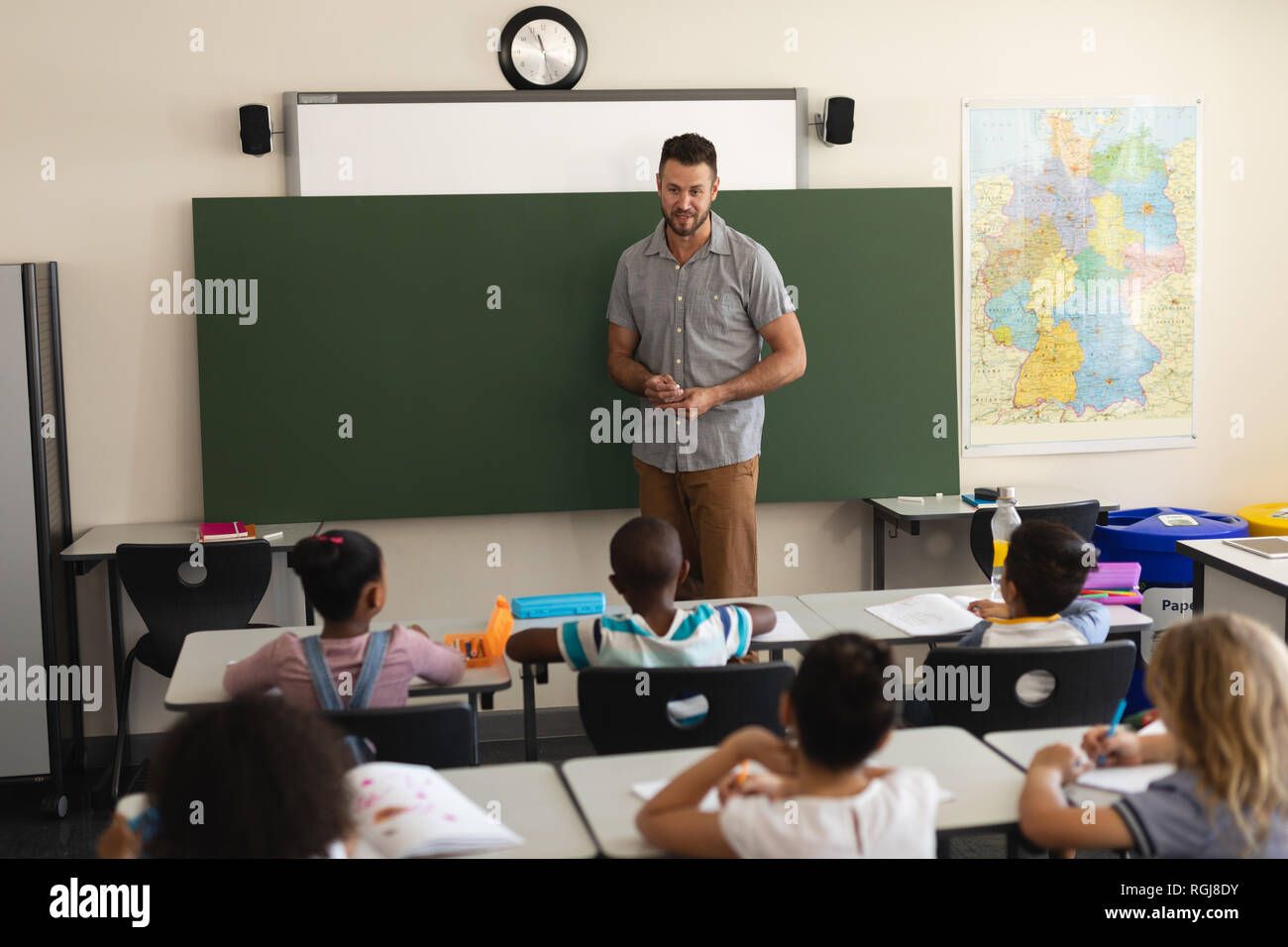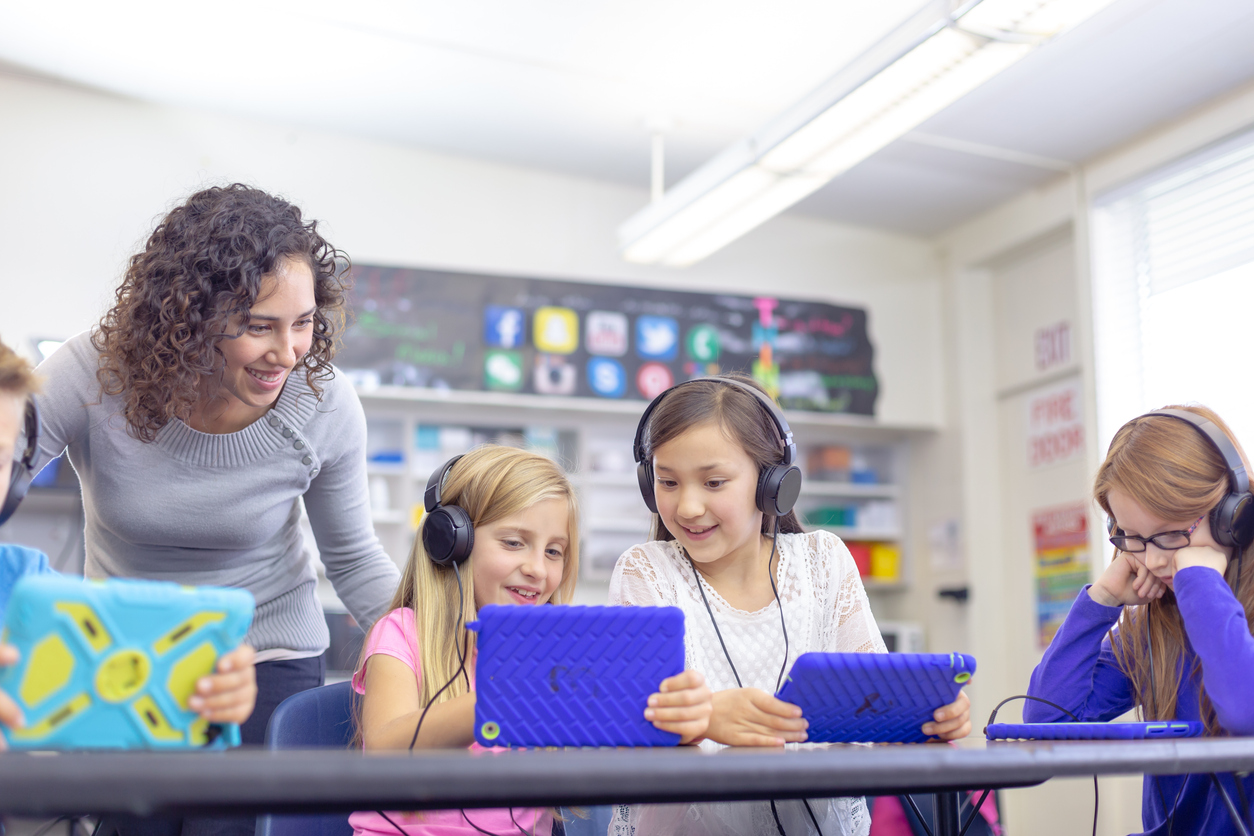Personalized Primary Science Tuition Singapore to Cater to Your Child’s Needs
Personalized Primary Science Tuition Singapore to Cater to Your Child’s Needs
Blog Article
A Comprehensive Guide to the Different Learning Methods in Main Scientific Research Instruction
The expedition of diverse knowing approaches in key scientific research direction provides an opportunity for educators to enhance trainee engagement and understanding dramatically. By analyzing hands-on knowing methods, inquiry-based strategies, and collective techniques, we can identify reliable techniques that deal with different finding out designs. Additionally, the assimilation of modern technology and differentiated guideline plays a crucial role in cultivating an inclusive atmosphere. Nonetheless, the concern continues to be: exactly how can these techniques be efficiently implemented in the classroom to optimize their influence? The solution depends on a better assessment of each method and its ramifications for mentor scientific research.

Hands-On Knowing Strategies
Hands-on discovering strategies play an essential function in main scientific research direction, engaging pupils in energetic expedition and testing. These approaches allow learners to communicate directly with materials and phenomena, cultivating a deeper understanding of scientific concepts. By utilizing manipulatives, models, and real-life experiments, instructors produce an atmosphere where students can observe, hypothesize, and test their concepts.
Such methods not just improve comprehension yet likewise cultivate critical reasoning and analytical abilities. When trainees take part in tasks like building basic devices, growing seeds, or conducting chemical reactions, they are urged to ask questions and look for answers through their very own observations. This experiential strategy aids to debunk intricate clinical principles, making them much more easily accessible and relatable.
In addition, hands-on learning promotes partnership among peers, as pupils typically function in teams to perform experiments or share findings. This synergy not just enriches their discovering experience however likewise develops essential social skills. Eventually, incorporating hands-on methods in main scientific research guideline cultivates a lifelong love of discovering and interest concerning the all-natural world, laying a solid structure for future academic pursuits in science and beyond.
Inquiry-Based Discovering
Inquiry-based understanding is a training method that urges pupils to ask questions, check out sensations, and construct their own understanding of clinical concepts. This method changes the focus from conventional teacher-led instruction to a more student-centered experience, where students take the initiative in their instructional journey. By fostering interest, inquiry-based learning advertises much deeper involvement with the material, permitting students to explore topics in a meaningful context.
In technique, this technique usually involves hands-on experiments, observations, and essential reasoning activities that align carefully with the scientific technique. Pupils are motivated to create hypotheses, style examinations, and analyze information, which grows crucial abilities such as analytical and analytic reasoning. The function of the instructor in this structure is to promote expedition, guiding students through the query process while motivating independent idea and partnership.
Furthermore, inquiry-based discovering nurtures a feeling of ownership over the learning procedure, inspiring trainees to pursue knowledge actively. This approach not only boosts understanding of clinical principles however also fosters a long-lasting love for learning, outfitting pupils with the abilities necessary to navigate a progressively complicated globe.
Collaborative Knowing Approaches
Collective discovering approaches empower pupils to engage in purposeful interactions with peers, promoting a shared duty for their educational outcomes. In primary scientific research direction, these techniques encourage students to collaborate to discover scientific ideas, address troubles, and conduct experiments (primary science tuition Singapore). By taking part in group activities, trainees can take advantage of diverse viewpoints, allowing for richer understanding and retention of scientific knowledge
One key element of collaborative discovering is the emphasis on interaction skills. Pupils have to verbalize their ideas, listen actively to others, and discuss concepts, every one of which are important competencies in both scholastic and real-world contexts. This social interaction not only boosts their understanding of scientific concepts however additionally promotes synergy and problem resolution abilities.
When students see the value of their contributions within a group, they are extra likely to take ownership of their understanding trip. On the whole, incorporating collaborative learning methods in main science instruction cultivates a dynamic learning atmosphere that prepares pupils for future scholastic and social difficulties.
Technology Combination in Science
The integration of innovation in key science instruction boosts discovering experiences by giving ingenious devices and sources that sustain navigate to these guys various training approaches, consisting of collaborative knowing - primary science tuition Singapore. Using electronic platforms, simulations, and interactive applications allows students to involve deeply with scientific principles, helping with a much more hands-on method to discovering
Online research laboratories, for example, allow learners to conduct experiments safely and successfully, promoting inquiry-based understanding. These tools can imitate real-world clinical scenarios, enabling trainees to picture intricate processes that would certainly be challenging to duplicate in a standard classroom setting. Moreover, modern technology fosters interaction and collaboration amongst pupils, as they can share findings and collaborate on projects through online platforms.
Additionally, multimedia presentations and instructional video clips can enrich lessons by providing to varied learning styles, making abstract ideas more available. Information analysis tools additionally encourage students to gather and translate clinical data, enhancing crucial believing skills. Overall, the tactical incorporation of modern technology in primary science guideline not only boosts engagement yet additionally prepares trainees for a technically advanced society, outfitting them with vital abilities for future scientific endeavors.
Set Apart Guideline Techniques
Set apart direction strategies are essential for dealing with the varied needs of students in main science education. These approaches allow teachers to customize their mentor methods to accommodate differing capabilities, rate of interests, and finding out styles within the class. By using separated direction, instructors can develop an inclusive setting that cultivates involvement and enhances understanding of clinical ideas.
One efficient method is to use versatile organizing, which enables trainees to team up with peers at similar skill levels or with differing perspectives. This method encourages peer knowing and advertises crucial thinking. Furthermore, using options in assignments can equip students, allowing them to select projects that reverberate with their passions while still fulfilling curricular goals.
In informative post addition, incorporating tiered tasks is one more beneficial strategy. By making jobs with varying degrees of complexity, instructors can make certain that all pupils are suitably tested, despite their efficiency. Making use of formative assessments to gauge comprehending further makes it possible for instructors to readjust their educational techniques dynamically, guaranteeing that each learner gets the support they need.
Eventually, carrying out set apart direction techniques in main scientific research education and learning not only improves student knowing results but also grows an enthusiasm for science, preparing trainees for future academic quests.

Conclusion
In summary, efficient primary science instruction requires a multifaceted strategy that incorporates hands-on learning, inquiry-based methods, and collective techniques. The assimilation of technology and distinguished guideline even more provides to diverse knowing styles, cultivating a setting helpful to expedition and vital reasoning.
The exploration of diverse learning approaches in key scientific research guideline offers a chance for educators to boost trainee involvement and comprehension considerably.Hands-on knowing techniques play a crucial about his role in main scientific research instruction, involving pupils in active expedition and trial and error.Inquiry-based knowing is an educational approach that urges students to ask inquiries, explore phenomena, and construct their own understanding of scientific principles.Joint knowing methods empower pupils to involve in significant interactions with peers, cultivating a common responsibility for their instructional end results. On the whole, including collective learning approaches in main science direction grows a vibrant understanding environment that prepares trainees for future academic and social obstacles.
Report this page